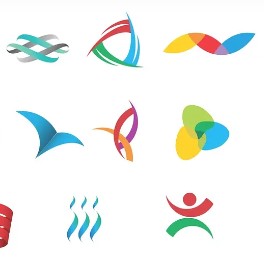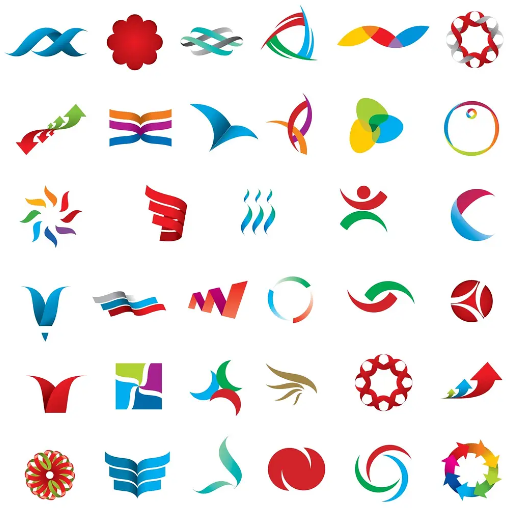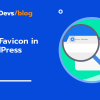The Importance of Favicons [Best Suggestions]
Engaging with your website visitors is key, and one often overlooked element is the importance of favicons. These tiny icons play a big role in enhancing your site’s branding, recognition, and user experience. By adding a favicon, you not only make your site visually appealing but also increase its professionalism and credibility. Let’s find out the reasons why favicons matter and how they can elevate your online presence.
But before that, why don’t we discuss a bit about what is a favicon.
What is a Favicon?

A favicon is like your website’s mini signature, a tiny icon that appears next to your site’s name in browser tabs and bookmarks. It’s like the cherry on top of your digital sundae, adding a splash of personality and flair to your web presence. For instance, think of it as the logo of your favorite coffee shop that you spot in your browser while browsing their website, making it instantly recognizable and memorable.
Where Are Favicons Used?
If you still don’t know where is favicon used, I would say it is essential to know. Well, Favicons are used in several places across the internet to enhance the visual identity and branding of a website. Here’s where you’ll typically find them:
Browser Tabs: When you open a website in your web browser, the favicon appears on the browser tab next to the page title. It helps users quickly identify and switch between multiple open tabs. For example, if you have several tabs open for different news websites, each favicon can help you distinguish between them at a glance.
Bookmarks: When users bookmark a website for later reference, the favicon is often displayed next to the site’s name in the bookmarks bar or menu. This visual cue makes it easier for users to locate and recognize their saved websites among a list of bookmarks. Imagine having a collection of recipe websites bookmarked with each one featuring its unique favicon, making it effortless to find your favorite recipes.
Browser Address Bar: Some browsers display the favicon next to the website’s URL in the address bar. This provides users with a visual confirmation that they are visiting the intended website and not a phishing or fraudulent site. For instance, seeing the familiar favicon of a social media platform assures users they are on the correct website before logging in.
Browser History: When users revisit a website they’ve previously visited, the favicon may appear next to the site’s URL in the browser history. This visual reference helps users recall and identify the websites they’ve previously explored, facilitating easier navigation through their browsing history.
Overall, favicons serve as visual cues that improve user experience by making websites more recognizable, memorable, and visually appealing across various browsing platforms and interfaces. Whether it’s in browser tabs, bookmarks, or the address bar, these small icons play a big role in enhancing the overall branding and identity of a website on the internet.
Related Articles:
What is the Importance of Favicons in SEO?

Favicons might seem like tiny details, but they can actually have a significant impact on SEO (Search Engine Optimization). So, the questions is – are favicons important for SEO? Here’s why they’re important:
Brand Recognition: Favicons help in brand recognition and reinforcement. When users see your favicon next to your website’s listing in search engine results pages (SERPs), they’re more likely to recognize and click on your site. This increased click-through rate (CTR) can positively impact your site’s SEO by signaling to search engines that your site is relevant and engaging.
User Experience: A visually appealing and recognizable favicon enhances the overall user experience. When users see your favicon in browser tabs, bookmarks, and search results, it creates a sense of familiarity and professionalism. Positive user experiences can indirectly benefit your SEO by increasing user engagement, reducing bounce rates, and encouraging return visits.
Credibility and Trust: Websites with well-designed favicons convey a sense of credibility and trustworthiness to users. In a competitive online landscape, establishing trust with your audience is crucial for SEO success. A favicon adds a touch of professionalism to your site, signaling to users that your site is legitimate and worthy of their attention.
Brand Consistency: Consistency is key to effective branding and SEO. By incorporating your brand logo or symbol into your favicon, you ensure consistency across all online touchpoints. This consistency reinforces your brand identity and helps users associate your favicon with your brand, which can lead to increased brand loyalty and improved SEO performance.
Differentiation: In crowded SERPs, a distinctive favicon can help your website stand out from the competition. When users are scanning search results, an eye-catching favicon can draw their attention and compel them to click on your listing instead of others. This differentiation can lead to higher CTRs and improved search engine rankings over time.
In summary, while favicons may seem like small design elements, their impact on SEO should not be underestimated. By enhancing brand recognition, improving user experience, building credibility, ensuring consistency, and facilitating differentiation, favicons play a vital role in optimizing your website for search engines and driving organic traffic to your site.
What size of Favicon is the best?
Determining the perfect size for your favicon is essential for maintaining its visual appeal and compatibility across different browsing environments. Opting for the recommended 32×32 pixels ensures your favicon shines brightly on every screen and device.
Main Size: The ideal size for a favicon is 32×32 pixels.
Compatibility: This size ensures compatibility across different browsers and devices.
Clarity: A 32×32 pixel favicon maintains clarity and visual appeal, even at a small scale.
High-Density Displays: To support high-density displays like those on smartphones and tablets, provide higher resolution versions of the favicon, such as 64×64 pixels or 128×128 pixels.
Multiple Sizes: Offering multiple sizes ensures that your favicon looks crisp and professional across all devices and platforms, enhancing user experience and brand consistency.
What Formats Should I Use for a Favicon?
A favicon is a small icon associated with a website, typically displayed in the browser’s address bar or next to the site’s name in a bookmark list. The most common format for favicons is .ico, but modern browsers also support other image formats. Here are the main formats you can use for a favicon:
ICO: This is the traditional format for favicons. It supports multiple image sizes and can contain multiple images for different contexts (e.g., different resolutions for different devices).
PNG: Favicons can also be in PNG format, which supports transparency and is widely used for various web graphics. However, PNG favicons are not supported by all browsers.
SVG: Scalable Vector Graphics (SVG) can be used for favicons as well. SVG is resolution-independent and can provide high-quality icons that scale well to different sizes. However, browser support for SVG favicons may vary.
JPEG: While less common, some browsers may support JPEG format for favicons. However, it’s not recommended because JPEG doesn’t support transparency and may not render well at small sizes.
When creating a favicon, it’s generally recommended to provide multiple sizes to ensure compatibility across different devices and resolutions. You can use online favicon generators or design tools like Adobe Photoshop or Illustrator to create favicons in the appropriate formats and sizes.
How To Create A Favicon For Your Website?
Creating a favicon for your website is relatively straightforward. So, if anyone asks, how to create a good favicon or logo, well, here’s a step-by-step guide to creating a favicon:
Design Your Icon: Use a graphic design tool like Adobe Photoshop, Illustrator, GIMP, or an online design tool to create your favicon. Keep in mind that favicons are small, so your design should be simple and recognizable even at a small size (16×16 pixels).
Choose the Right Size: Favicons are typically square and come in various sizes, such as 16×16, 32×32, 64×64, etc. It’s a good idea to create your favicon in multiple sizes to ensure compatibility with different devices and browsers.
Save Your Favicon: Once you’ve designed your favicon, save it in the appropriate file formats. The most common format is .ico, but you can also save it as a PNG, SVG, or JPEG depending on your preferences and browser support.
Generate the Favicon File: If you’ve designed your favicon in multiple sizes, you can use online favicon generators or specialized software to generate the .ico file with all the necessary sizes included. These tools will typically allow you to upload your image and generate the favicon file automatically.
Upload Your Favicon: Once you have your favicon file ready, upload it to the root directory of your website using FTP or your web hosting control panel. Name the file “favicon.ico”.
Add Favicon Code to Your Website: In the <head> section of your website’s HTML code, add the following line to specify the location of your favicon:
html
Copy the following code
<link rel=”icon” type=”image/x-icon” href=”/favicon.ico”>
This code tells browsers where to find your favicon file.
Test Your Favicon: After adding the favicon code to your website, test it in different browsers to ensure it’s displaying correctly. You can also use online tools like the Favicon Checker to verify that your favicon is set up correctly.
That’s it! Once you’ve completed these steps, your website should have a custom favicon that appears in the browser’s address bar and bookmarks.
Can I Use Favicon Generator To Generate A Favicon?
Yes, you can use favicon generators to create favicons for your website. Creating a favicon using a favicon generator has some good and bad sides.
Here are the advantages and disadvantages of using favicon generators:
Advantages:
Ease of Use: Favicon generators typically have user-friendly interfaces that make it easy for anyone, even those without graphic design experience, to create a favicon quickly.
Multiple Formats and Sizes: Many favicon generators allow you to input a single image and automatically generate favicons in various sizes and formats, ensuring compatibility across different devices and browsers.
Customization Options: While simple to use, many favicon generators offer customization options such as cropping, resizing, and adding effects to your favicon to suit your preferences.
Speed: Using a favicon generator can save you time compared to creating favicons manually, especially if you need to generate favicons in multiple sizes.
Disadvantages:
Limited Design Options: Favicon generators may have limitations in terms of design capabilities compared to professional graphic design software. This can restrict your ability to create highly customized or intricate favicons.
Quality Concerns: The quality of the favicons generated by online generators may vary depending on the tool used. Some generators may produce lower-quality favicons with pixelation or distortion, particularly at smaller sizes.
Lack of Uniqueness: Favicon generators often use templates or common design elements, which can result in less unique favicons that may resemble those of other websites.
Dependency on Third-Party Services: When using an online favicon generator, you’re dependent on the availability and reliability of the service. If the generator’s website goes down or changes its functionality, it could affect your ability to create or update your favicon.
Despite these disadvantages, favicon generators can be a convenient and efficient option for many website owners. Here are some popular favicon generator websites you can try:
- Favicon.io: This online tool allows you to generate favicons from images and customize them to your liking.
- RealFaviconGenerator.net: RealFaviconGenerator offers advanced options for generating favicons and provides compatibility checks for various platforms and browsers.
- Favicon.cc: Favicon.cc provides a simple interface for creating and editing favicons using drawing tools.
- Favicon-Generator.org: This website allows you to generate favicons from images and offers options for adjusting transparency and resizing.
- Faviconer.com: Faviconer provides a straightforward tool for converting images into favicons and offers options for adjusting the size and format.
More sites for favicon generator:
These websites offer different features and capabilities, so you may want to explore them to find the one that best suits your needs.
Which Tool Is The Best To Serve Multi-Purpose?
Looking for a versatile solution to cover all your WordPress needs? Look no further than the Swiss Toolkit! With a comprehensive set of features including customizable avatars, bulk theme deletion, and enhanced security options, it’s the ultimate multi-purpose tool for efficient site management. Say hello to streamlined workflows and empowered customization with Swiss Toolkit.
Out of all the tools listed, the Swiss Toolkit stands out as the best for serving multiple purposes. Here’s why:
Spotlight Search: Enables users to quickly find what they need within their WordPress site, enhancing efficiency and productivity.
Upload Custom Avatar without Gravatar: Provides flexibility for users to personalize their profiles without relying on external services, fostering a sense of identity and customization.
Edit WordPress Username: Offers users the ability to modify their usernames easily, catering to evolving preferences or branding needs.
Post/Page Duplicator: Streamlines content creation by allowing users to duplicate existing posts or pages, saving time and effort especially for recurring content structures.
Bulk Theme Delete: Simplifies theme management by enabling users to remove multiple themes at once, keeping the WordPress installation clean and organized.
Increase Maximum Upload File Size: Enhances the platform’s capabilities by expanding the limit for file uploads, accommodating larger media files or complex content needs.
Change Login URL: Bolsters security by enabling users to customize the login URL, mitigating common attack vectors and enhancing site protection.
Insert Headers and Footers: Facilitates seamless integration of third-party scripts or tracking codes into the website, empowering users to manage their site’s functionality efficiently.
Favicon Uploader: Allows users to add a custom favicon, enhancing brand recognition and visual appeal across browsers and devices.
Temporary Login Without a Password: Provides a secure and convenient way for users to grant temporary access to collaborators or support personnel without sharing sensitive login credentials.
Change WP Admin Login: Adds an extra layer of security by allowing users to modify the default admin login URL, reducing the risk of unauthorized access attempts.
Multiple Image Format Support: Accommodates various image formats, ensuring compatibility with diverse media types and enhancing the site’s visual appeal and functionality.
With such a comprehensive array of features, the Swiss Toolkit emerges as the top choice for users seeking a versatile solution that caters to a wide range of WordPress management needs.
Frequently Asked Questions:
Q1: What is a favicon and why is it important for websites?
A1: A favicon is a small icon displayed in the browser tab next to the website’s title. It’s important because it enhances brand recognition, improves user experience, and adds professionalism to the website.
Q2: How does a favicon contribute to brand identity?
A2: Favicons help reinforce brand identity by displaying a recognizable logo or symbol in the browser tab, making it easier for users to identify and remember the website.
Q3: Can a favicon impact website traffic and user engagement?
A3: Yes, a favicon can impact website traffic and user engagement. A visually appealing favicon can attract users’ attention, encourage clicks, and increase user engagement with the website.
Q4: Is having a favicon essential for search engine optimization (SEO)?
A4: While having a favicon is not a direct ranking factor for SEO, it can indirectly impact user behavior, which may influence SEO metrics such as click-through rates and bounce rates.
Q5: How does a favicon affect website credibility and professionalism?
A5: A well-designed favicon adds credibility and professionalism to a website, signaling to users that the site is well-maintained and trustworthy. Conversely, the absence of a favicon or a poorly designed one may give the impression of a less professional website.
Q6: Are there any technical benefits to having a favicon?
A6: Yes, there are technical benefits to having a favicon. Favicons can improve website performance by reducing server requests, as browsers cache favicons once they’re loaded, resulting in faster page loading times for returning visitors.
Q7: Can a favicon impact user experience on mobile devices?
A7: Absolutely. On mobile devices, where screen space is limited, favicons help users quickly identify and switch between multiple tabs or bookmarks, improving overall user experience and navigation.
Wrapping Up:
In conclusion, favicons play a crucial role in website branding, user experience, and overall professionalism. From enhancing brand recognition to improving website credibility, favicons are essential elements of web design. Remember, The Importance of Favicons cannot be overstated—they contribute to a visually appealing and memorable online presence, ultimately leaving a lasting impression on visitors.





